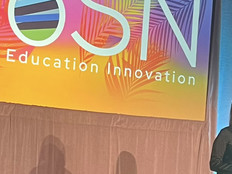The 6 Fundamentals of Technology Coaching
Schools often launch new technology without a plan for supporting and coaching teachers through the process of using the devices and software in their classrooms. Supporting teachers is key to launching and continuing the marriage of educational technology and curriculum. It also helps them raise student achievement.
Today, students’ needs vary as they grow up in the digital learning age. They maximize their learning when teachers know how to integrate existing tech with the latest instructional best practices and strategies. We must support educators on this critical journey. This is where an ed-tech integration specialist can help.
Just like with teaching, integration specialists need to differentiate instruction and support to meet the needs of the teachers. There is no one-size-fits-all approach. It is a collaborative cycle of support that should consist of setting goals with the teacher, co-planning lessons, observing the teacher in action and then debriefing after the lesson.
SIGN UP: Get more news from the EdTech newsletter in your inbox every two weeks!
1. Form Connections with Teachers to Learn About Tech
The foundation of a great coaching cycle starts by forming professional relationships and connections with teachers. Specialists should reach out to teachers who may not always make the first move to integrate. Learning where teachers feel confident or vulnerable is a key piece to the coach-teacher paradigm. Drop in to classrooms and leave positive messages or an emoji on teachers’ boards to raise interest. Let teachers know you recognize their teaching abilities and willingness to take risks. Additionally, visiting a classroom just to watch a teacher interact with students before the first meeting will show you value him or her. This will also help you understand what technology will enhance his or her teaching methods.
2. Have a Planning Meeting to Discuss IT Integration
Once a teacher requests coaching (or is assigned a coach, depending on the situation), the first meeting in the coaching cycle should start with you and the teacher discussing how you can marry technology to the content and standards he or she is teaching.
Before you start downloading exciting apps or talking about the hottest new technology, it’s important that teachers really think about whether bringing that tool into the classroom will enhance or transform the learning. For instance, just because an app or website gives kids great practice on math facts, should they should be doing it in class? Would that approach be similar to handing everyone a worksheet to practice instead of using a more personalized lesson plan? Start with a solid instructional idea, then match how the technology can enhance the unit, lesson plan, curriculum, project, assessment, etc.
While planning, ask some key questions to enhance technology integration:
- What is the goal of the lesson?
- Why do you want to use this technology here?
- Will this enhance the current approach?
- How do you hope the technology will enhance learning?
- Can the technology make this idea more relevant to students?
- Will adding technology allow students to do something that they couldn’t do without it? For example, does the technology allow students to collaborate beyond the classroom walls? Does the technology remove a barrier for students?
Technology can really engage students and enrich classroom curriculum. Integrating the technology appropriately is critical for relevant and authentic learning opportunities.
Close the meeting by discussing the end goal of the lesson and how technology will allow for multiple pathways to reach that goal. Sometimes, when planning, it’s best to work backward from the end goal. Finish the meeting with clear next steps for the lesson agenda and the role of the teacher if the ed-tech integrator is modeling the lesson.
3. Test Tech Tools in the Classroom
The second step in the coaching cycle is to take the plan and put it into action. Typically, at this stage, the coach will model the lesson live with students to support the teacher and allow him or her to observe the strategies in practice. This takes quite a bit of finesse, because although you are more experienced with the tech tools, the classroom teacher is the curriculum expert. This is where the marriage of curriculum and technology truly shines.
Your goal is for the teacher to observe how effective the tool of choice can be and not worry that he or she will flail getting it to work. Be sure to honor the teacher’s expertise in his or her content and lean on the teacher at crucial times in the lesson to confirm the content being delivered. Ensure you both take notes to use for questions and feedback and to support the teacher moving forward.
4. Reflect on Lessons Learned from the IT Demo
Following the first integrated lesson, take some time to process how it went, either together, alone or both. Keep notes of what tools were used and how they were implemented to help with reflection and to serve as a reference for the teacher. We’ve found that teachers like to have something tangible to refer back to when planning the next lesson even though we’ll discuss the lesson beforehand. Notes also document how the coaching cycle went and give us ideas for future coaching sessions.
The next step is to discuss how the takeover will go. In the takeover, the teacher will take the reins while the coach supports the technology integration.
5. Work with Teachers to Implement New Solutions
You will feel excited, empowered and proud at this stage because you’ve given a teacher a new set of tools to truly transform his or her teaching. Following the teacher-led lesson, meet to discuss how it went and go over your previous notes. Answer any questions the teacher may have. Reflect together on what went well and what could change for the better.
Once the teacher gets comfortable with the integration you modeled, he or she may reach out again to start another cycle with a new tool. The classroom will want you back, not only to see how well they’re using the technology you modeled, but also to ask you to show another lesson.
6. Remember to Check in with Teachers and Students
Speaking of going back, remember to stop back in the classroom to see how things are progressing. Ask the students how they like the new tools. They will enjoy seeing you, which is an added-bonus of the coaching cycle.









